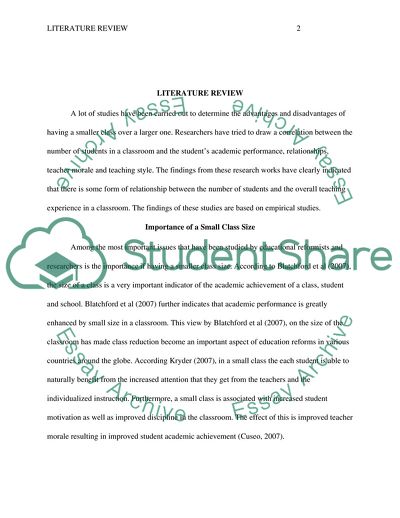Cite this document
(The Advantages and Disadvantages of Having a Smaller Class over a Essay Example | Topics and Well Written Essays - 1250 words - 6, n.d.)
The Advantages and Disadvantages of Having a Smaller Class over a Essay Example | Topics and Well Written Essays - 1250 words - 6. https://studentshare.org/education/1834304-literature-review
The Advantages and Disadvantages of Having a Smaller Class over a Essay Example | Topics and Well Written Essays - 1250 words - 6. https://studentshare.org/education/1834304-literature-review
(The Advantages and Disadvantages of Having a Smaller Class over a Essay Example | Topics and Well Written Essays - 1250 Words - 6)
The Advantages and Disadvantages of Having a Smaller Class over a Essay Example | Topics and Well Written Essays - 1250 Words - 6. https://studentshare.org/education/1834304-literature-review.
The Advantages and Disadvantages of Having a Smaller Class over a Essay Example | Topics and Well Written Essays - 1250 Words - 6. https://studentshare.org/education/1834304-literature-review.
“The Advantages and Disadvantages of Having a Smaller Class over a Essay Example | Topics and Well Written Essays - 1250 Words - 6”. https://studentshare.org/education/1834304-literature-review.


